Wax-based pencils vs oil-based pencils - Which is better?
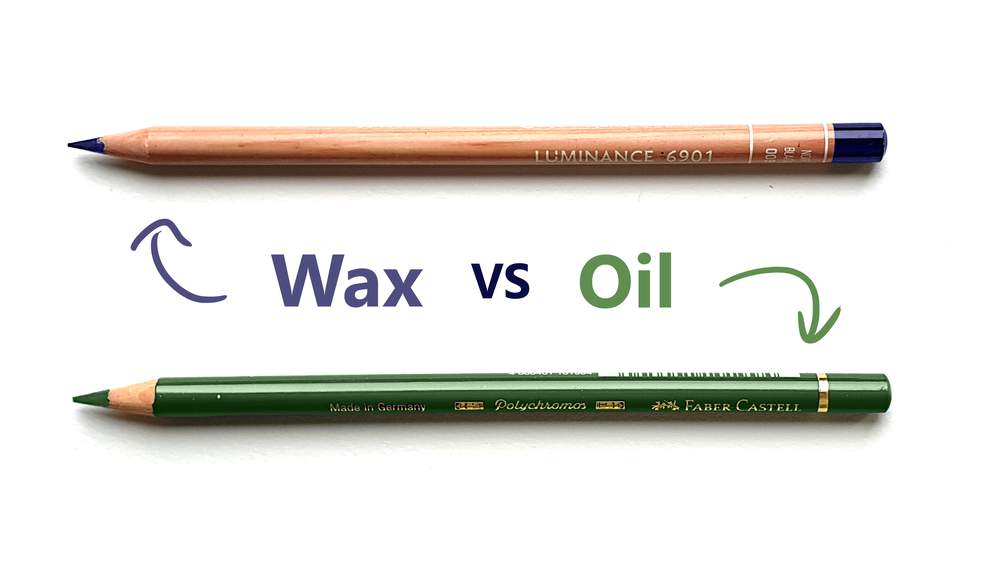
Colored pencils are available in 2 different variants: wax based and oil based. Each has its own properties and they behave very differently. But what are the differences? And more important which one fits your needs better? In this blog I'll answer both of those questions, so continue reading to find out which is best for you.
If you're interested in good colored pencils, check out the best colored pencils in this article listing the best colored pencils on the market.
Discover all types of colored pencils in this article, listing every type and the differences.
What are the differences between wax-based and oil-based pencils?
1. Hardness of the core
Wax-based pencils
Wax-based colored pencils often have a very soft core. Though that's not always the case, in general wax-based pencils are softer.
Oil-based pencils
Oil base colored pencils mostly have a hard core, especially when compared to wax-based pencils. There are some differences between each brand of oil-based pencils, but most of the time the lead is harder than the lead of wax-based pencils.
This is the biggest difference between wax-based and oil-based colored pencils and it is the base of all other differences.
2. Pressure on the paper/burnishing
Wax-based pencils
As wax-based pencils are generally very soft they are great for burnishing. You can easily fill in the white of the paper without much pressure.
Oil-based pencils
Oil-based pencils, on the other hand, can make it a bit challenging to fill in the tooth of the paper. You'll need a lot more pressure to burnish, but keeping the pencil sharp will make it easier.
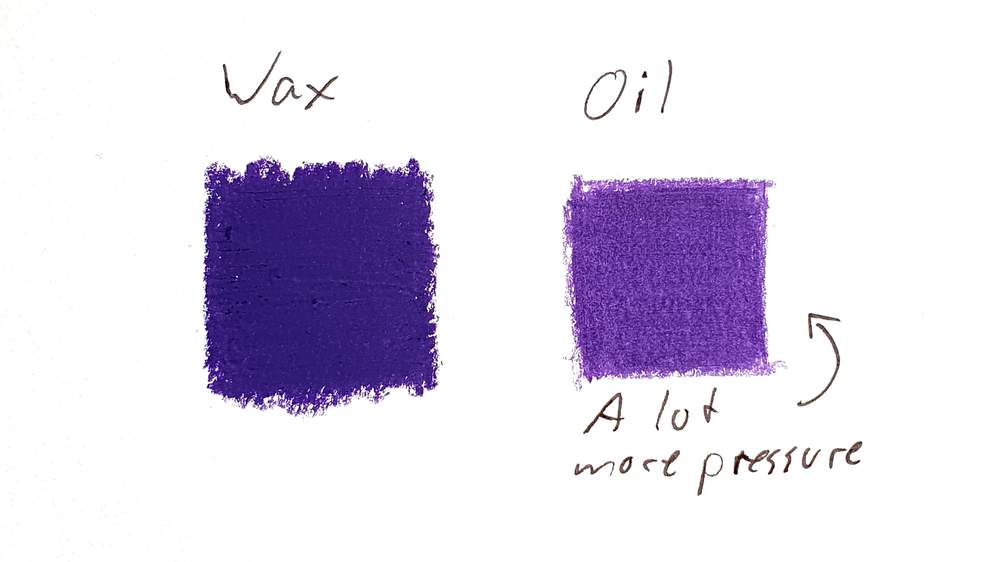
3. Blending
Wax-based pencils
Wax-based pencils are great for blending. Because the core is very soft it is very easy to draw transitions and mix colors.
Oil-based pencils
Oil-based pencils are less ideal for blending. Though if you use lots of layers and build up the pressure slowly you can get nice transitions, but it still is more difficult than with wax-based pencils.
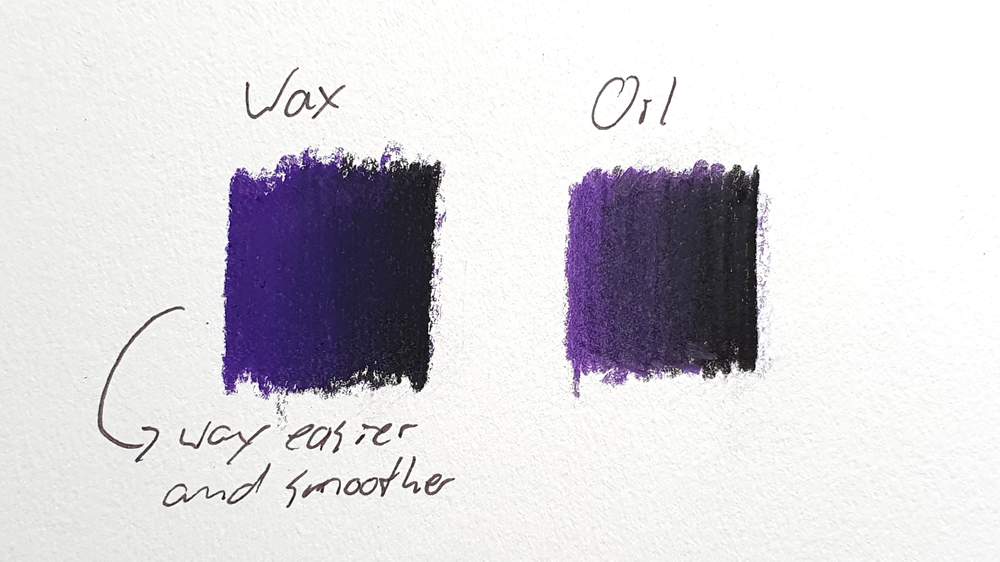
4. Glazing
Wax-based pencils
As wax-based pencils are very soft they easily give off pigment, even on a layer of burnished pencils. With wax-based pencils, you can also very easily draw lighter colors on dark colors by pressing harder. This makes it really easy to draw highlights.
Oil-based pencils
Oil-based pencils are hard and thus give off pigment way less easily. So when trying to glaze on a layer of burnished pencils they don't give off much if any pigment at all. And because of this, you can't really draw any highlights on darker colors.
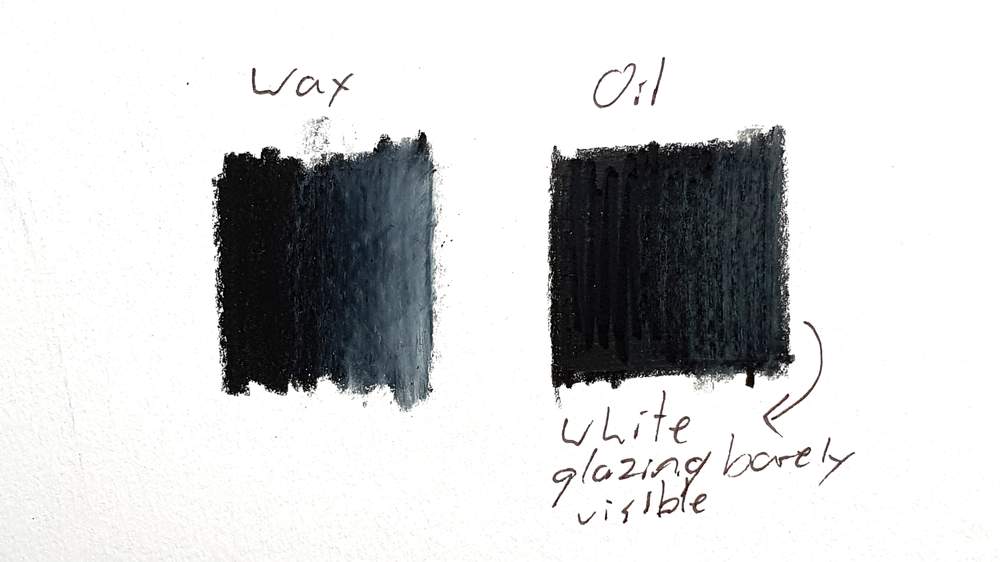
5. Sharpness of the point
Wax-based pencils
As mentioned multiple times before, the lead of wax-based pencils is soft. Because of this wax-based pencils don't hold their point very long. So you'll need to sharpen it more often.
Oil-based pencils
Oil-based pencils on the other hand have a hard core making them hold their point longer.
6. Drawing details
Wax-based pencils
As wax-based pencils don't hold their point very long it makes them less ideal for drawing details. When trying to draw details you'll get fuzzy lines instead of sharp edges.
Oil-based pencils
Because oil-based pencils hold their point longer it makes them ideal for drawing details. You can draw a reasonable amount of time before needing to sharpen them again when drawing detail.
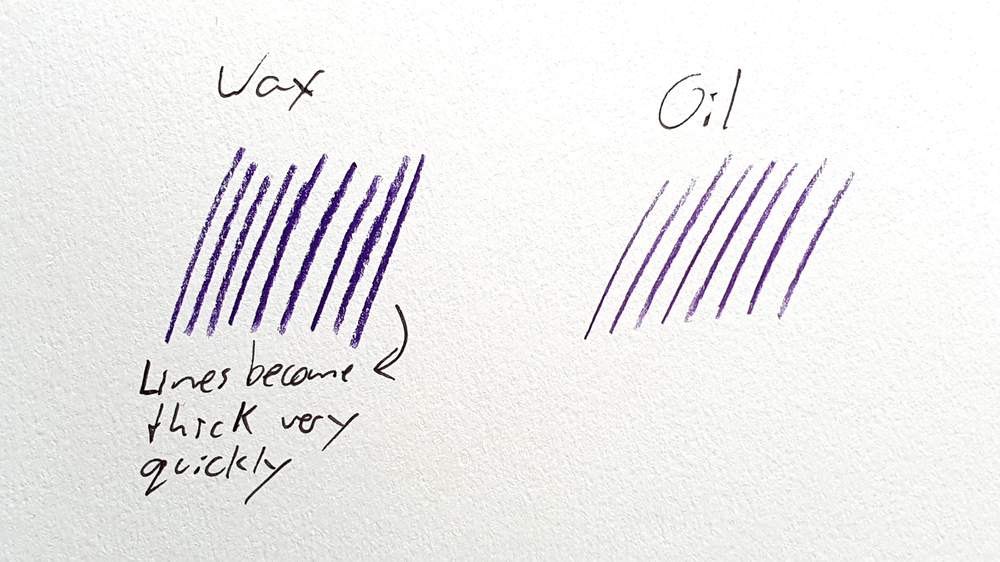
7. Pencil grit
Wax-based pencils
Wax-based pencils leave a lot more pencil grit when drawing and the grid is a lot bigger compared to oil-based pencils. So when you're blending you'll need to wipe the grit away quite often to prevent accidentally smudging.
Oil-based pencils
Oil-based pencils don't leave as much grit and the grit they produce is a lot smaller. Though you'll still need to wipe it away sometimes to prevent smudging.
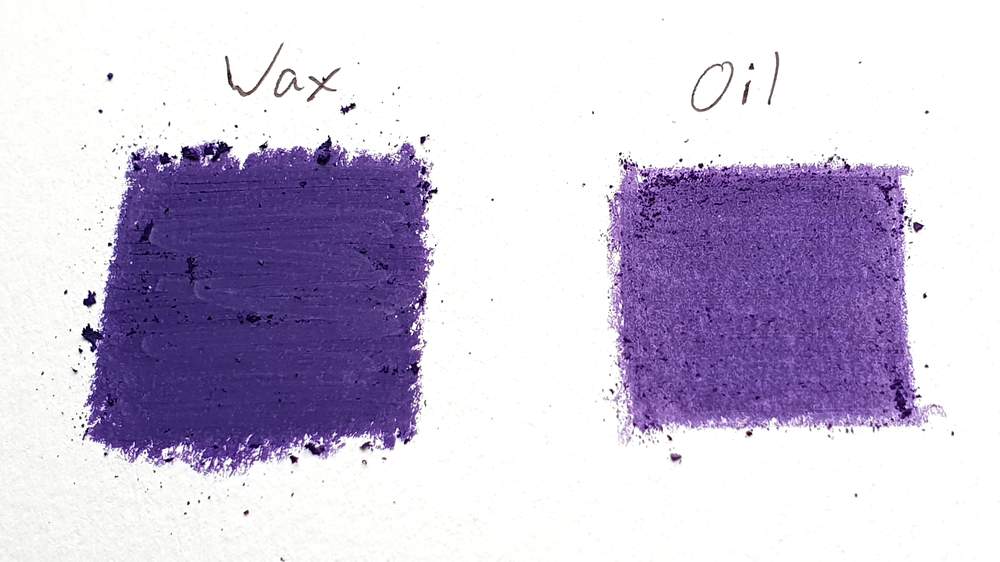
8. Durability
Wax-based pencils
When drawing with wax-based pencils you will go through them quicker than oil-based pencils. This is because wax-based pencils are softer resulting in more pencil grit and sharpening more often.
Oil-based pencils
Oil-based pencils will last longer as the lead is harder which results in less pencil grit and needing to sharpen less often.
Overview of all differences
| Property | Wax based | Oil based |
|---|---|---|
| Hardness | Soft | Hard |
| Burnishing | Great | Difficult |
| Blending | Great | Difficult |
| Glazing | Great | Not good |
| Holding the point | Only for a short amount of time | For a long time |
| Drawing details | Not great | great |
| Grit | Much grit | Little bit of grit |
| Durability | Less than oil-based | More than wax-based |
Which is better? Oil-based or wax-based colored pencils?
As you've read before wax-based and oil-based colored pencils have different properties making them good for different things.
Wax-based pencils are great for drawing portraits or anything that needs smooth blending and mixing. They are also very good for cartoon or anime-style drawings as you can easily get solid colors with wax-based pencils.
Oil-based pencils are great for anything with lots of details, like animals and cars.
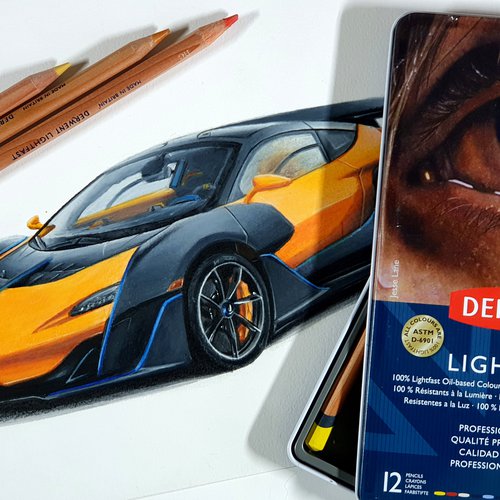

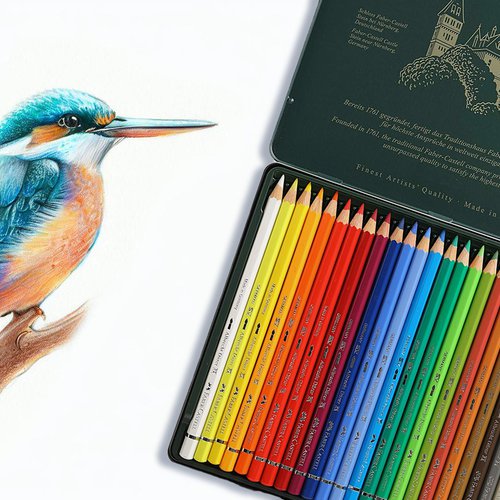
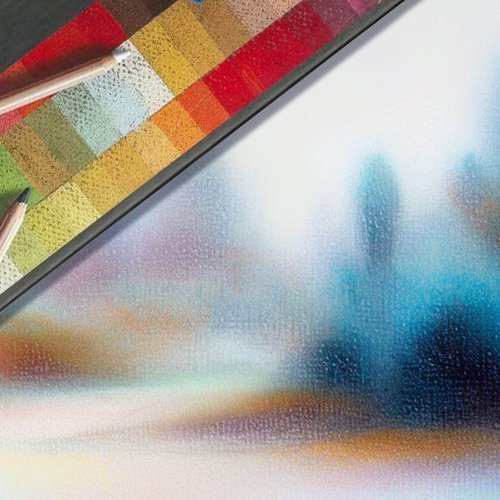

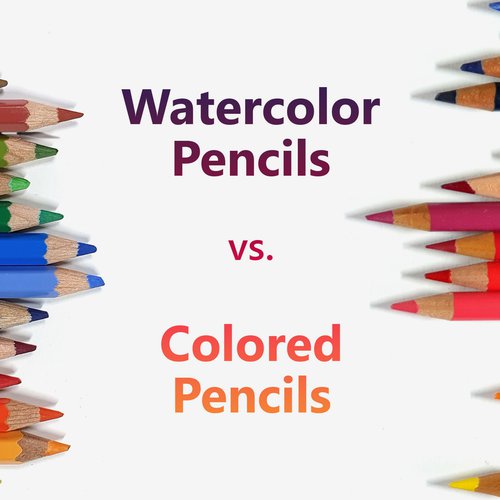
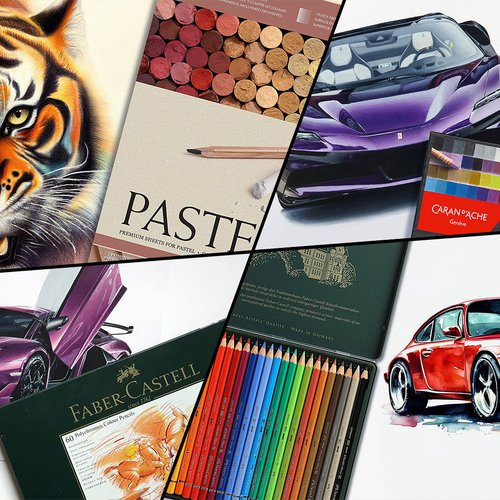




Be the first to comment!
Comments
There are no comments yet.